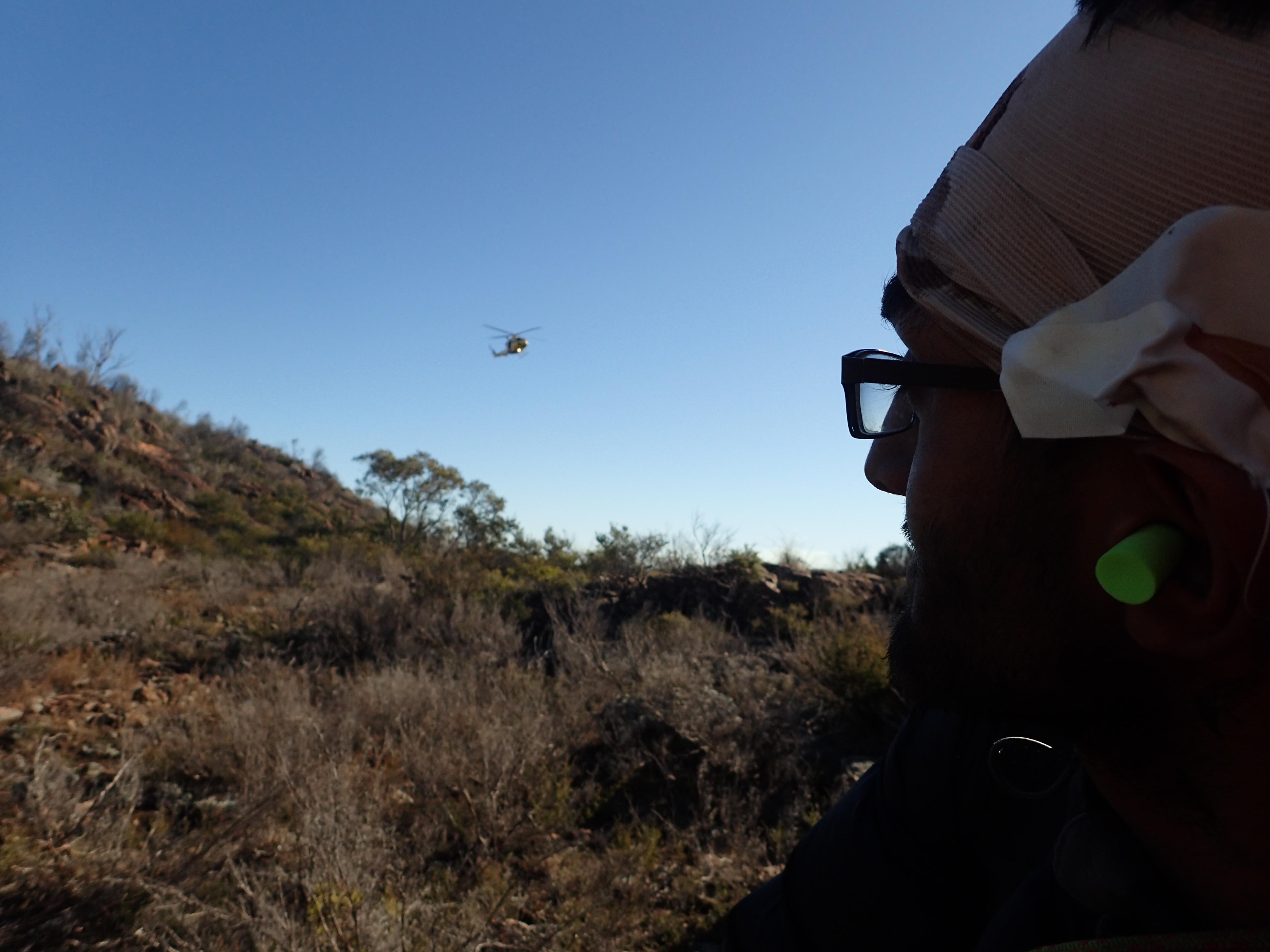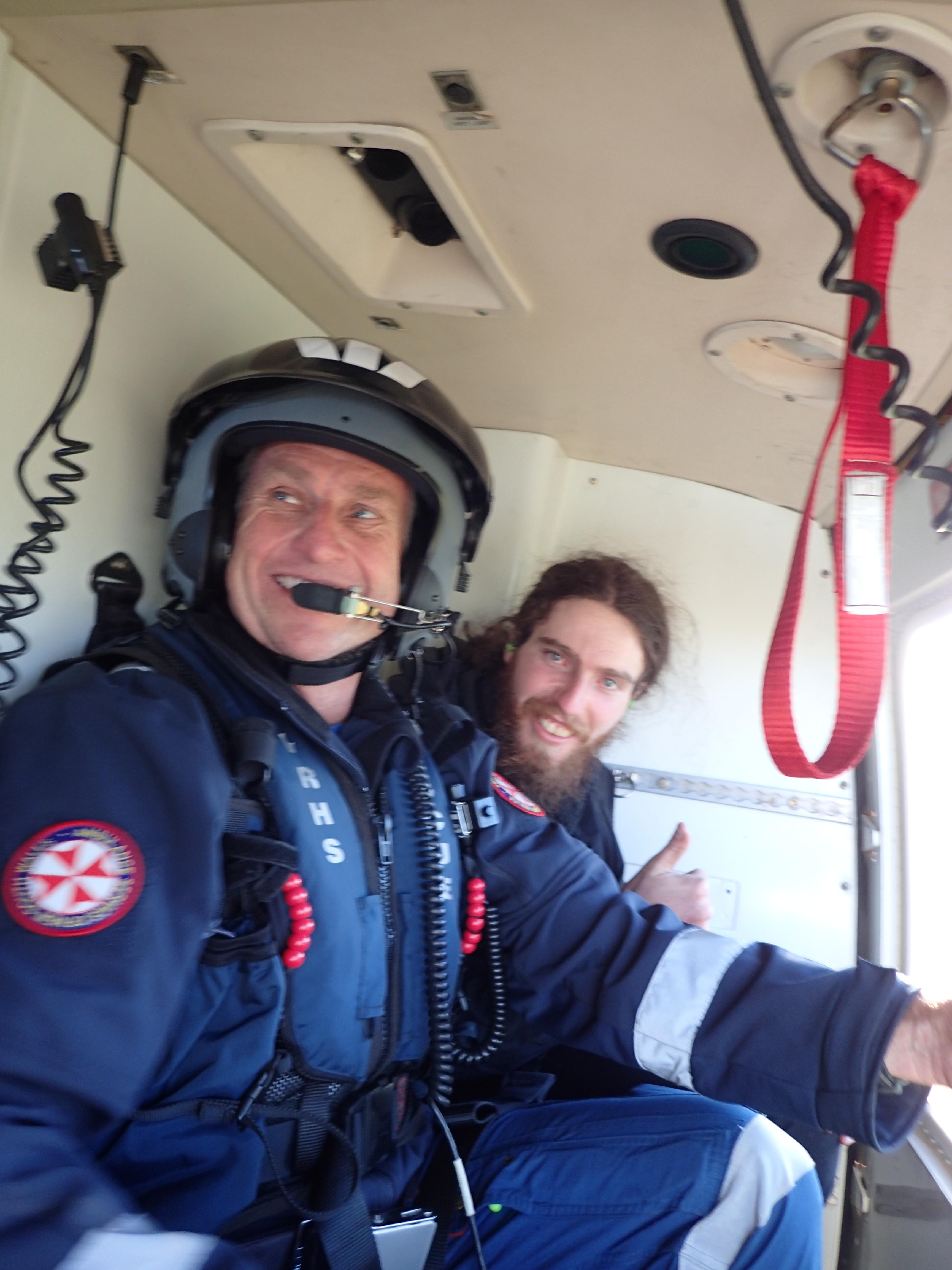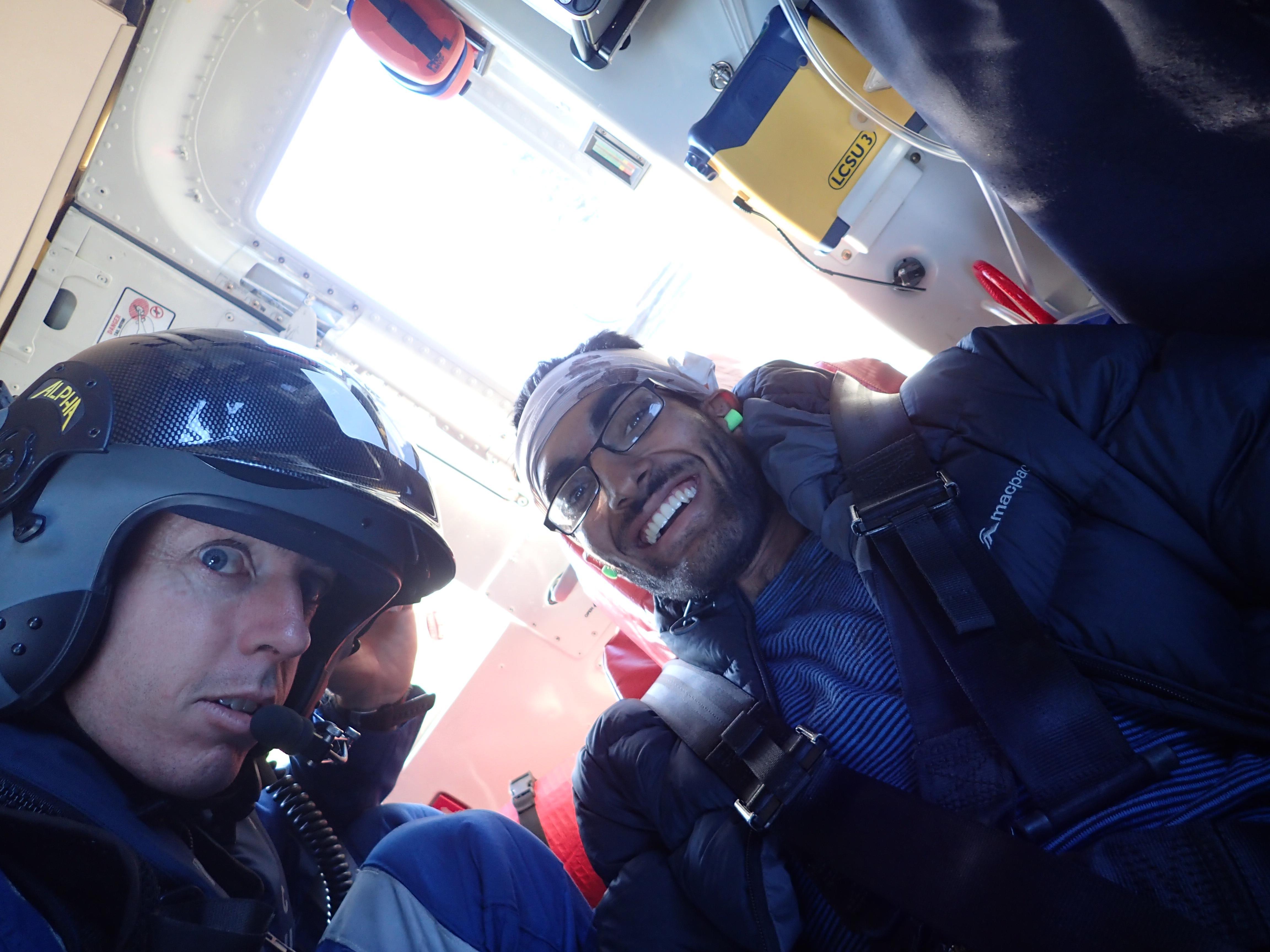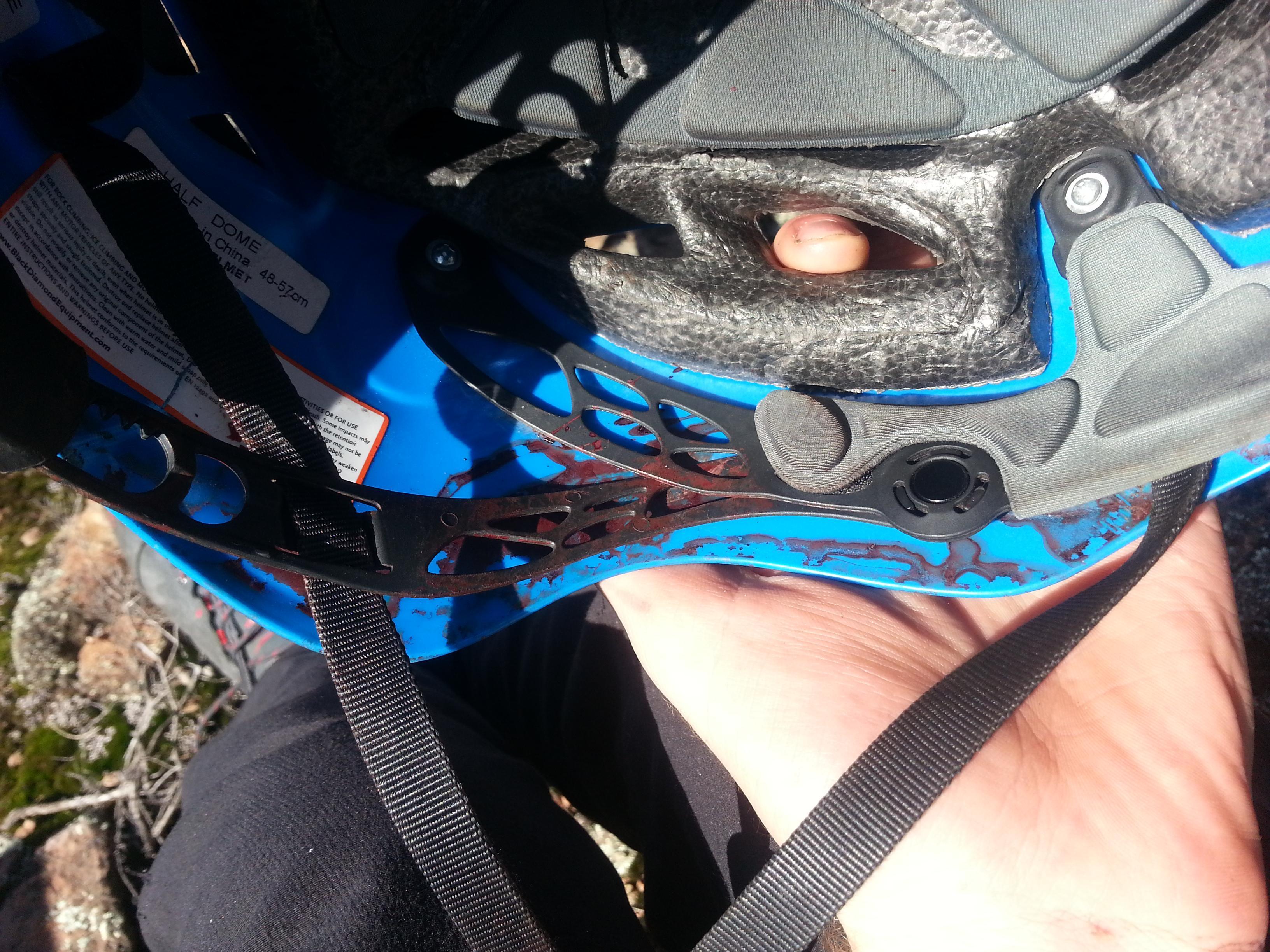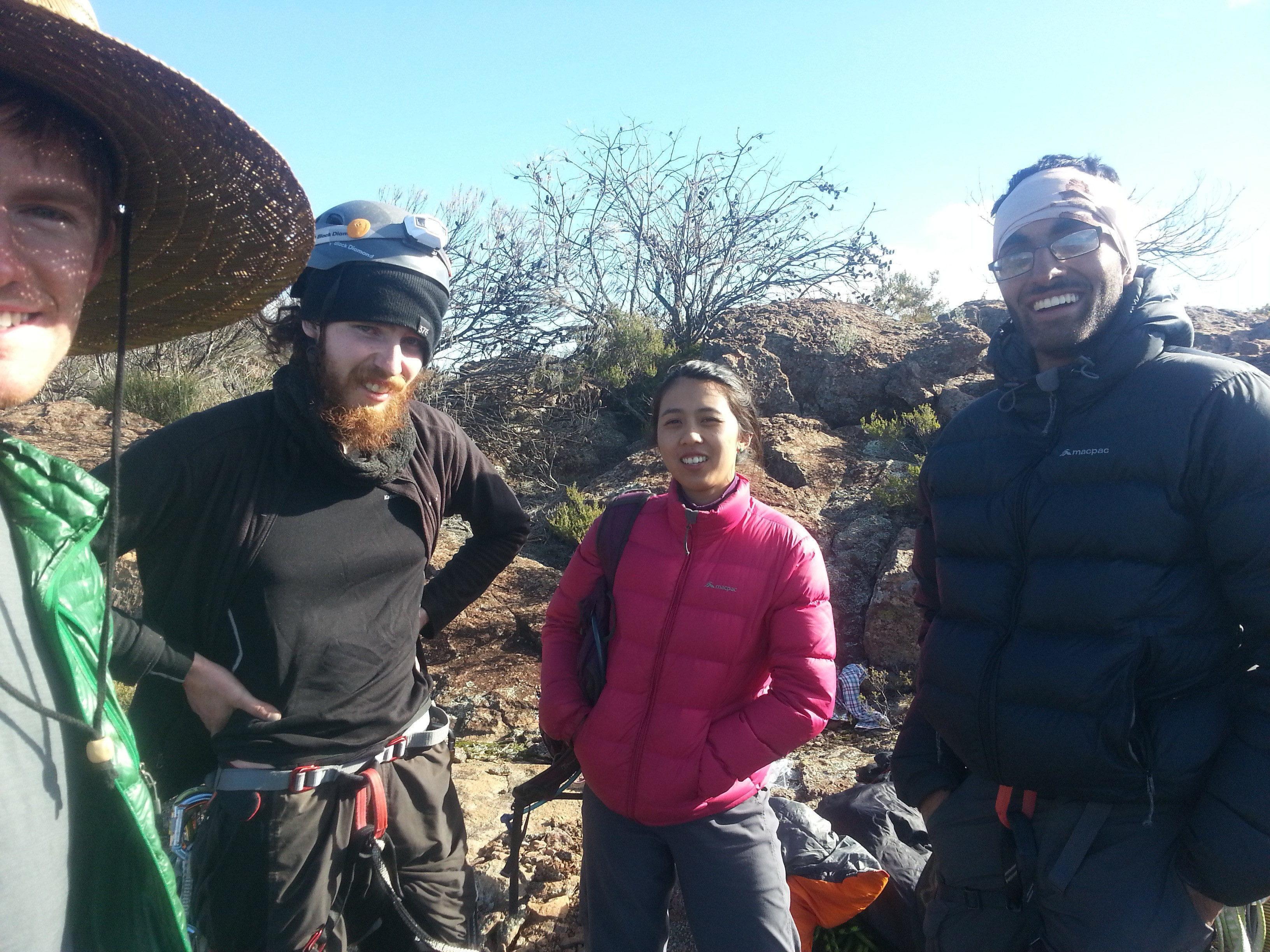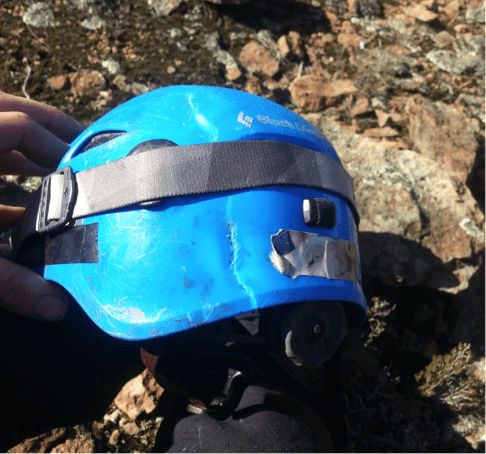Where to start? If you hadn’t heard, our Warrumbungles long weekend trip turned into an epic after Eamonn and I were stranded on a ledge approximately 160m above ground, triggering one of the largest rock rescue efforts in NSW (two rescue helicopters, vertical rescue paramedics and rescue volunteers, parks and services volunteers and an SES crew). The story was covered by a couple of media outlets (ABC, Newcastle Herald, Northern Daily Leader) but all of them seem to make some assertions that aren’t true (for one thing, the accident was a lead climbing fall and not from abseiling). We thought it was important to share what happened with you so that you too can learn from our experience and be better prepared for a worst case scenario. So then, here’s our story, and what better a place to start than the beginning?
We left Sydney in the wee hours of Saturday morning knowing that we had a long day ahead. After a couple of minor mishaps and Ewa calling in sick, we made our way through to the Gow and up to Coonabarabran. The drive into the Warrumbungles was stunning to say the least – the longest solar system drive in the world took us past some pretty awe-inspiring views of tall and imposing trachyte spires (a little reminiscent of Arapiles). The general expectation was that services in the Warrumbungles were scarce and that the approach to the campsite would be tough – we’d printed climbing guides (from several sources), topographic maps and packed our gear in hiking bags (well, except for Vicky who’d thought we’d be car camping). What we actually found was a nice visitor centre, a helpful Parks employee and well signposted trails that were, at best, only moderately steep and even paved in certain sections.
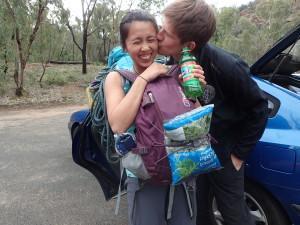
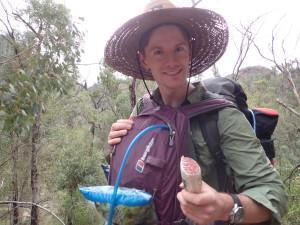
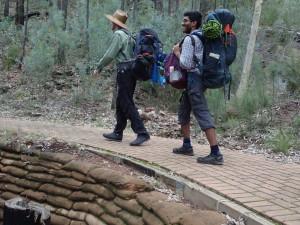
The plan was to hike to Balor Hut and set up camp there. On arrival, we found two guys chilling by the campfire (Luke and Joel). Turns out Joel had interned with Vicky – what a coincidence! After a quick glimpse of sunset, a warm meal and good company by the fire, we prepared for our climbs the next day. Brendan and Vicky planned to jump on Flight of the Phoenix, a mega-classic 18. Eamonn and I had originally planned to jump on Cornerstone Rib Direct (13, and thecrag guide had pictures/topos of the route). However, on reading the descent notes from the Bungles Guide (written by the Sydney Rockclimbing Club) we discovered that there was a 35m abseil and we had only brought one 60m rope on the hike in. We had another in the car but decided we didn’t need it since Ewa wasn’t with us. As such, we decided to head to Bluff Mountain with Vicky and Brendan and climb the 240m classic Bastion Buttress (10/13 depending on which guide you look at) since it was starred in the Rockies guide and the descent was a walk off. However, there were no topos of Bastion Buttress in the printouts we had taken, so we were relying on the route descriptions from thecrag and the Rockies guide.

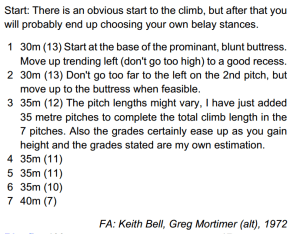
Greeted with cold and howling winds when we woke up at 6.30 on Sunday morning (turns out this wasn’t early enough...), we set off to Bluff Mountain. We took the following with us:
- Warm clothes (out of necessity because it was so damn cold in the morning)
- Plenty of food and water (this was a pain to second with, but it made the night on the ledge easier)
- Each group had a PLB
- Phone (Eamonn even had a battery bank)
- Head torches, spare batteries and a club first aid kit (I left my kit behind)
- Whistle
- Route descriptions from Sydney Rockies and thecrag
- A full rack including doubles of common cam sizes, at least 14 quickdraws, cordalettes, prusiks and plenty of slings and locking biners
The walk-in wasn’t particularly easy and took longer than expected. Making our way through loose ground and the scree at the base, we finally caught sight of the wing of the Phoenix. The view was absolutely breathtaking and no photo can capture the scale and unique texture of the mountain we were about to climb.
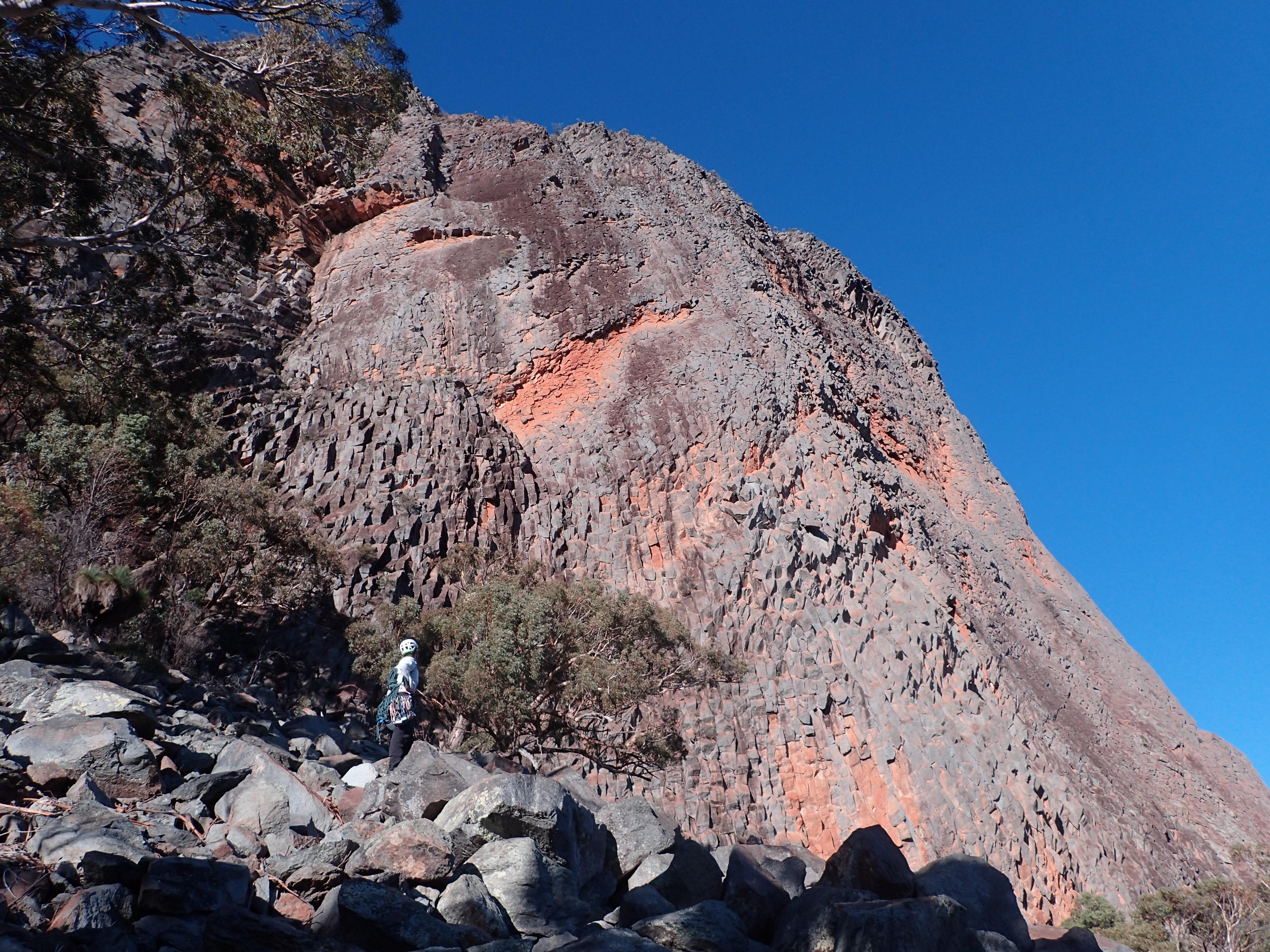
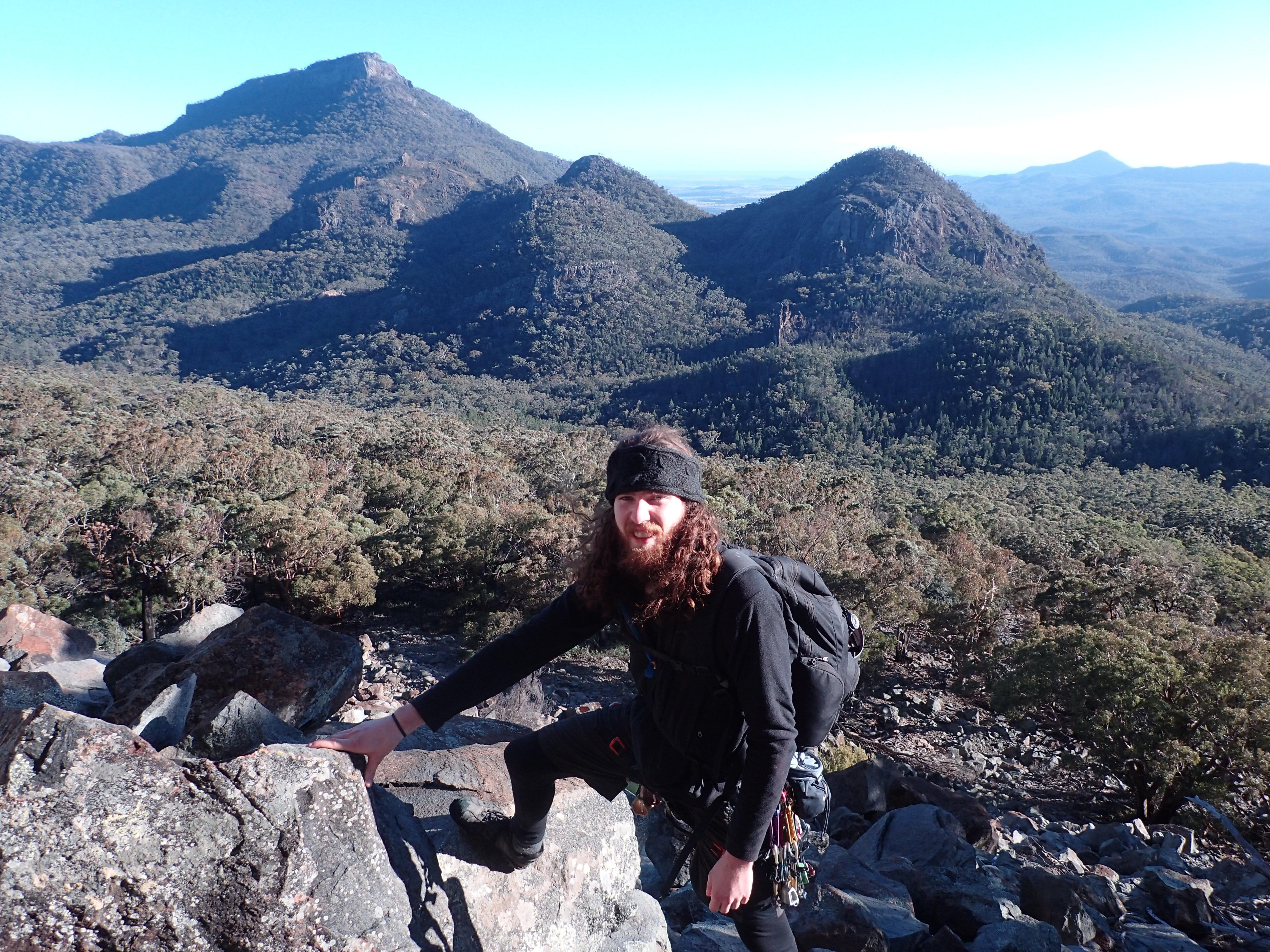
We had little time to dilly-dally – the walk-in has taken us 2.5 hours and we needed to start climbing as soon as possible. Eamonn and I left Vicky and Brendan as we went to check out Bastion Buttress. The start was not as ‘obvious’ as thecrag made it out to be – there were several viable options and the aforementioned recess could have been one of the many we saw. After we determined we were to the right of another climb that followed a waterway, Eamonn and I decided we’d start climbing since we were roughly in the right spot.
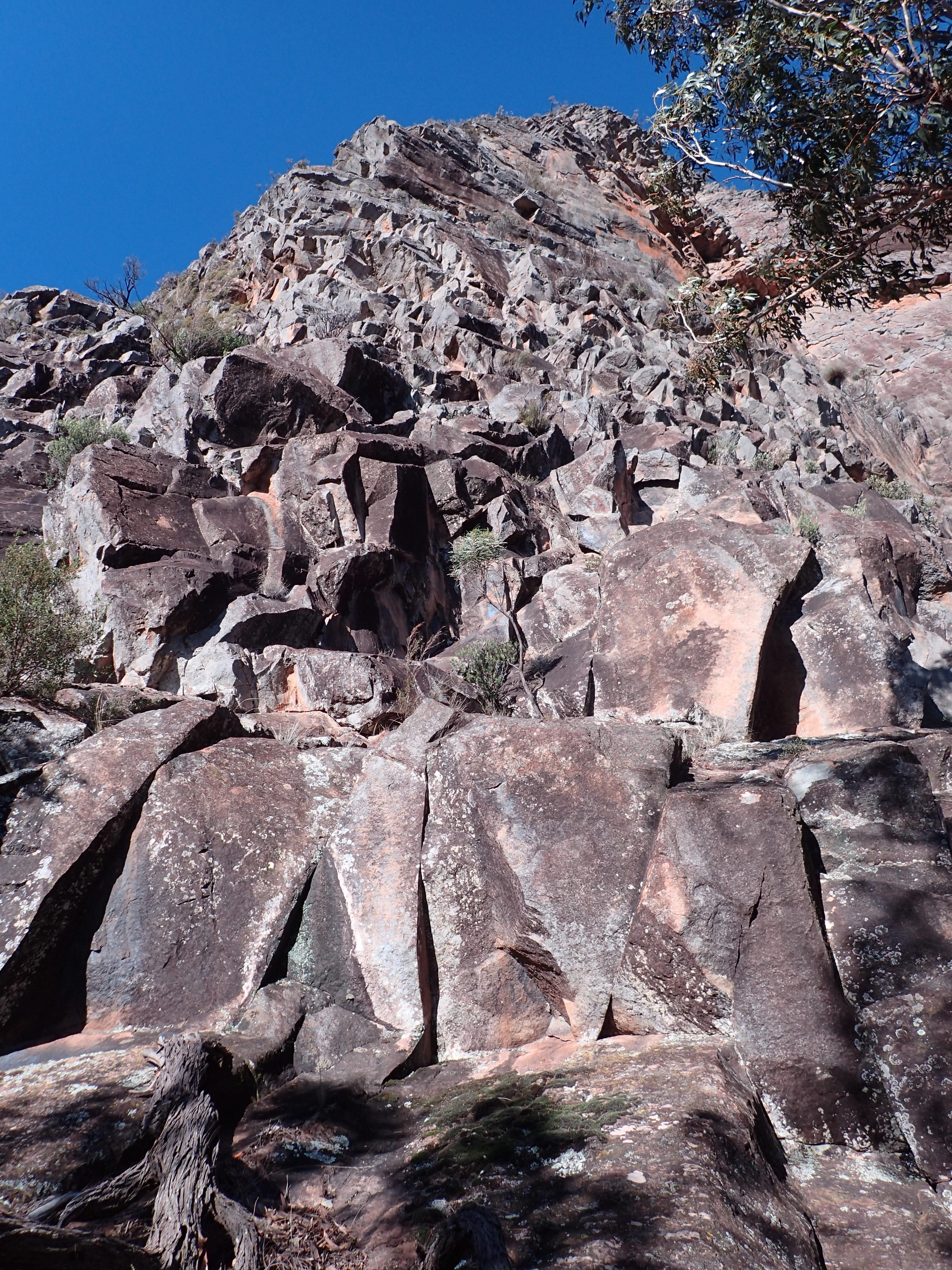
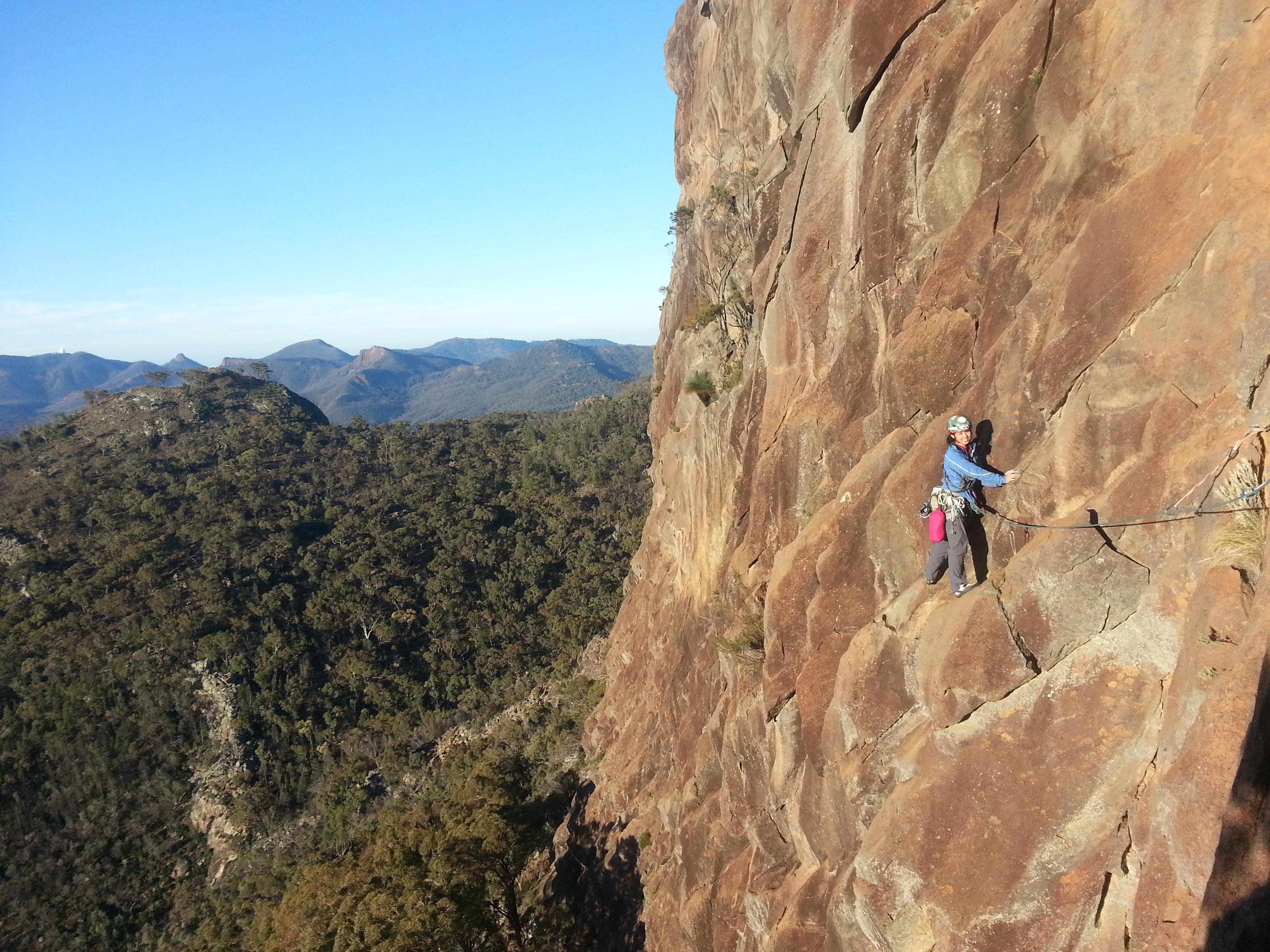
I’ll leave most of the description of the climbing to Eamonn (see below). Eamonn led the first pitch and seconding it was a rude shock. This didn’t feel like a 13 – there were incredibly unnerving segments (mostly heinous slab) with poor pro at times (Eamonn is a legend for leading that pitch). As expected (we’d talked to a few people about the Bungles before the trip), rock quality was subpar – I took a fall while seconding when a hold blew. After that, I was much more cautious about testing holds and protection.
We swapped leads at the first belay and I led the second pitch and attempted to follow the path of least resistance. Again, it felt tougher than a 13 – at one point I had to get my feet high and swing around a slightly overhanging wall. On a 13! Finding a crack system to make a belay anchor also proved to be difficult as what looked good from afar turned out to be rotten when tested. Endless traversing (in order to take the best path) also meant that rope drag was an issue. This limited pitch lengths but also our choice of route up the face (Eamonn and I found ourselves extending a lot of pieces).
At this point, you might be wondering why we continued. Despite poor rock quality (which means bad abseil anchors), we might have gotten away with bailing up to the second pitch and this may have meant avoiding the entire incident. However, the route description said that the first two pitches were the crux and that the climbing would get easier as we got higher. While the moves were tough for a 13, they were do-able.
Since it was about noon once we reached the top of the third pitch, I suggested we do two pitches each in order to minimise the time wasted by swapping gear and re-racking. Eamonn did brilliantly on pitches 3 and 4. At one point, he’d found himself at a dead end, had to downclimb, then head in the opposite direction. Unfortunately, the climbing was not feeling any easier but we were able to protect ourselves and do the moves.
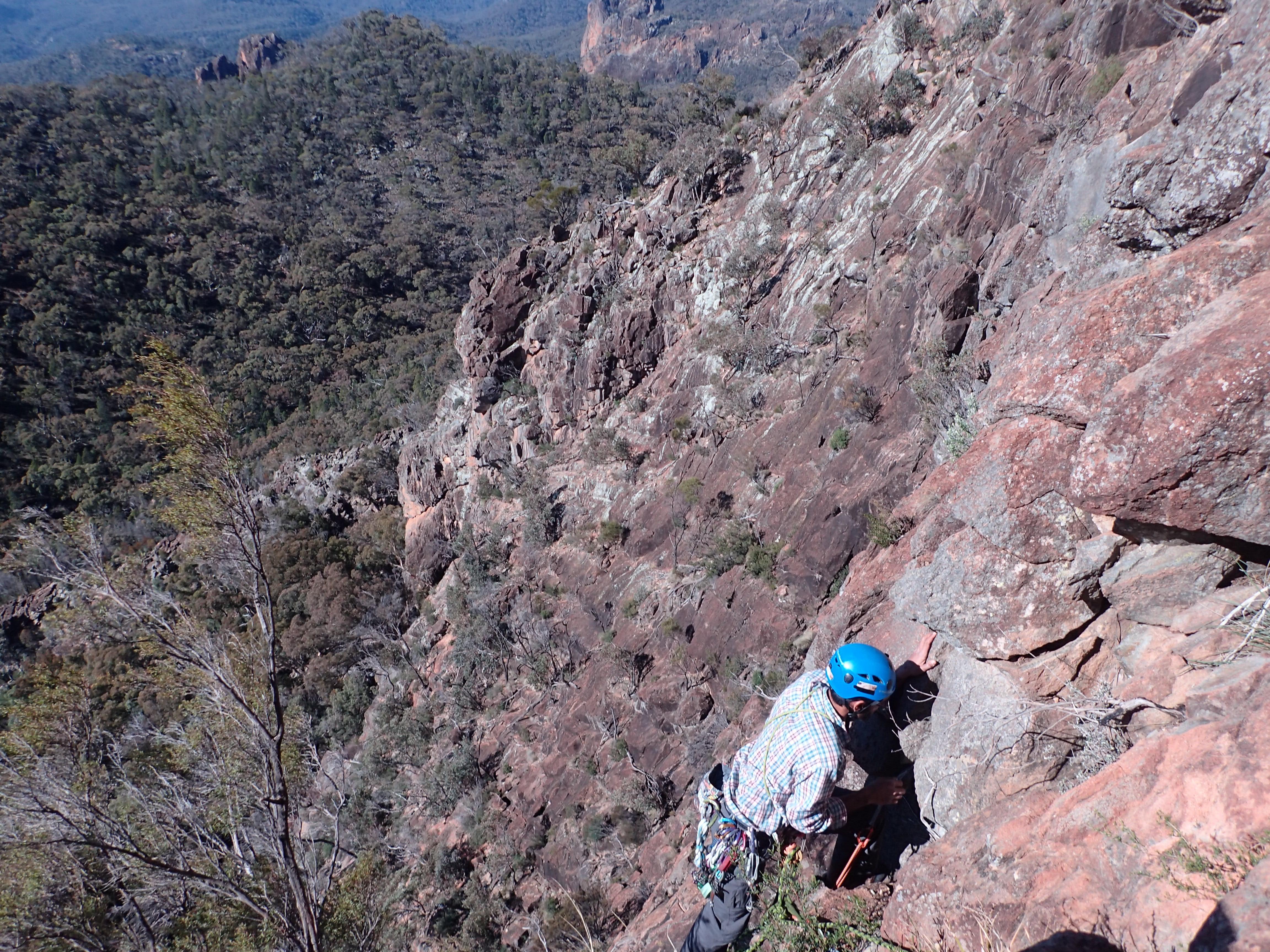
By the time I got to the top of pitch 4, the sun was setting. Donning our headtorches, we swapped gear and I went up and to the right of the belay. When I climbed up to the ledge above us, I nearly peed my pants. There was a nice blocky corner about 8m to the right of me, but to get there I had to traverse a blank slab. It looked like there was no pro until I found a carrot bolt. This made me feel better – other climbers had been there. I did the traverse and found a nice crack on the other side to protect the traverse (and ditch my heavy BD #4). The blocky corner offered decent pro and nice climbing until I came to a block with a sling around it. I partially weighted it almost came down on me. Phew! Who the hell slings blocks like that!
Up from the corner there was a ledge approximately two by three metres. To my left and right the climbing was thin and so was the pro. In front of me was a slightly overhanging boulder. It looked hard. I yelled to Eamonn to get his opinion and I went over each way to have a look and neither route looked appealing. Abseiling/bailing was next to impossible – one 60m rope meant approximately six 30m pitches and that assumes you can find good rock for abseil anchors after each pitch. I decided I’d have to try the boulder. I placed what I’d consider to be a bomber nut (in deep, good surface contact, well set) in a solid crack to the right of the boulder and extended it. As the move was to the left, not extending the piece would mean a lot of rope drag and the nut being pulled as I did the move. I tried a couple of the moves and then downclimbed. I then tried again, this time getting further. Unfortunately, the top was blank. I tried to downclimb and nothing felt right anymore. I frantically searched for holds to come down as I squeezed for my life. Finally, my grip gave way and I tumbled down..
The fall is a bit of a blur. What I think happened was that I fell and my ‘bomber’ nut blew. The main ledge (the rope came across) and a good #1 BD cam caught me (as well as a good belayer), but not before I hit several smaller ledges and fell 5-8m (not 15m as the news reports). I was conscious and nothing seemed broken, so after Eamonn asked me if I was OK I climbed back up to the main ledge I was on originally. It was here I realised I was bleeding from the back of my head. Eamonn called out for Brendan and Vicky, and they just so happened to be below us. They had bailed halfway along the traverse (3rd) pitch on Flight of the Phoenix and were walking out when I had fallen. As we were high up (~160-170m), I had a head injury and it was dark, we decided to activate the PLB.
The next priority was to make myself safe and try and get Eamonn to me. We had no idea how severe the injury was and if I would pass out. I made an anchor and made sure to confer with Eamonn (in case I was concussed and wasn’t thinking straight – it was good anyway because the most obvious pieces I could find relied on one crack system and hence put in a total of 4 pieces). I then tied into the anchor and put Eamonn on an autoblock top belay – if I were to pass out, the autoblock would have acted as a ratchet and prevented him from falling.
When Eamonn came up to me, we built an extra anchor in direction of the ledge, wrapped up my wound with a bandage and turned Eamonn’s phone on. Reception! We were able to communicate with everyone from the rescue authorities to my mum (imagine making that call!). I won’t say much about the night to try to keep things brief. We spent a long and cold night on the ledge - I fell at 5.30PM Sunday and we were reached by the rescue team (abseiling down) at 9.30AM the next morning. Temperatures approached zero accounting for the wind chill factor. We dipped into and out of micro sleeps in between conversations that became sparser as the night became colder. I was hauled out ~10 am but, unfortunately, Eamonn had to wait another couple of hours. From there, we were taken to Tamworth Base Hospital by the Westpac Rescue Helicopter. I got three stitches in the back of my head and Eamonn was treated for mild hypothermia. Brendan and Vicky picked us up from the hospital, but we were all tired and were planning to stay the night at a motel in Tamworth. Luckily, Katie messaged out of the blue saying we could stay at her mum’s place that night in Tamworth, which was a godsend. Thanks Ros!
Eamonn: The climbing style was very different to what I could have imagined. Awesome but very weird with quite a lot of smearing traverses. Route finding was particularly difficult as you would plan your line out in advance thinking there was some positive holds above, but either turned out to fragile rock, or sloping edges. You also cannot see much around because of the big blocks. This made the climbing a bit slower, as there were quite a few dead-ends where downclimbing was the only possibility.
On pitch 4, the rope drag was quite high due to the alpine nature of the climb. I found a possible location for an anchor and after checking with my hands the stability of the rocks I build an anchor. But upon testing it, I found that a bit of force down could actually push two (VERY large) boulders apart from the cam between them! I dismantled the anchor and did a small traverse to the right and set up another anchor (which was much better)!
I think because of this slight traverse, we now found ourselves on perhaps yet another route. As Abi began to lead this pitch he was looking at an un-protectable longer traverse right. The guide book description says to generally move right in the upper pitches. On the right was blocky, which looks easy but as pitch 1 showed me… was quite hard and unnerving! On the left, back where we had come, Abi had said it looked overhanging and when finding the carrot bolt to protect the right, we concluded it should be hopefully climbable.
As Abi went up this pitch he came to a point in the climb where it wasn’t obvious where to go. He was almost at a point of discussing other options when he thought he found an easier line to climb. The sun had just set, so I could only see his light now. I was relieved when he shouted that he made some of the moves of it, but this shouted turned into a yell as I see him fall off and his light disappear from view.
I had expected to catch a huge fall but was definitely not near the one you would catch on a climb that goes straight up! I was very glad when I heard Abi shout, but this turned into worry as he said his head was bleeding. I helped pull him up to where he was climbing and we discussed options of building an anchor where he was. He talked me through it, and we spent a bit longer trying to find a 3rd and 4th piece (knowing the rock quality and also not sure how serious Abi was).
It was a huge relief when trying to shout to Vicky and Brendan and seeing their lights and hearing their voices clearly from the ground. We were able to let them know the situation and that I would set off the PLB. It is very reassuring that at least someone knows you’re there! As I climbed up to Abi, he was singing Jamiroquai so I knew he hadn’t passed out. Reaching the ledge, I built another anchor in the direction in which we would be sitting (backed ourselves up to both anchors), and then activated the PLB.
It was a long and very very cold night with constant wind hitting us. I think having phone reception and an extra battery kept our energy levels up, as we could stay slightly updated in what the rescue team were doing. Because of the windy conditions, the helicopter was not used for the rescue extraction, and they relied upon abseiling down from the top and trying to find us. This is not an easy task in the night and also because of the rock formation, they had to make many attempts. We were then hauled out. Abi was first, but it took a few hours longer to set up another haul line for me, which I was thankfully backed up by a prussic to another line (many loose, sharp rocks that I was being hauled over!)
I had thermals, a fleece jacket and also a rain/wind proof jacket and woollen socks (so glad I brought those!) and also an emergency blanket. The emergency blanket coating flew off fairly quickly and didn’t do much in the way of insulation. I will be definitely be buying a down jacket!
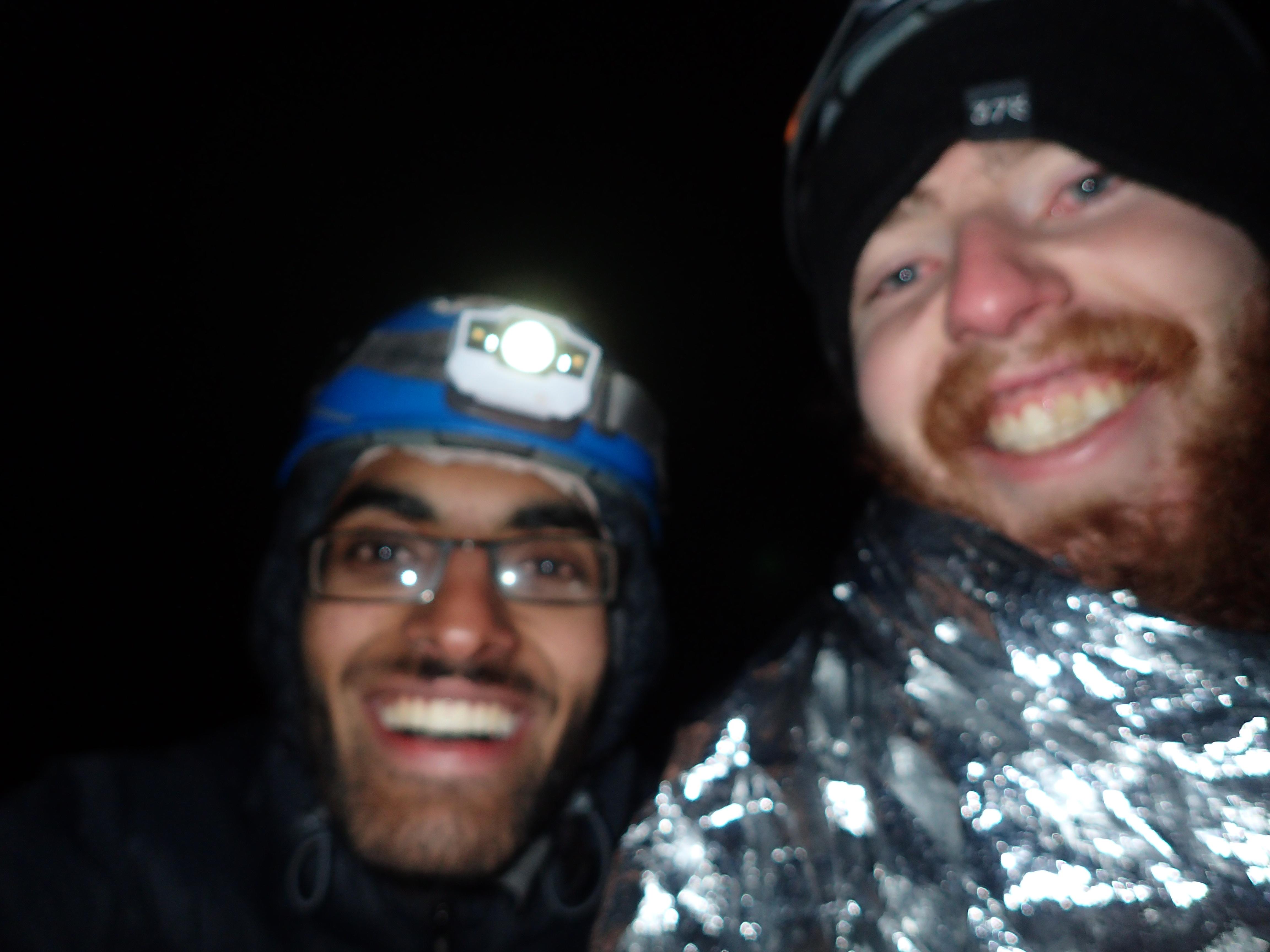
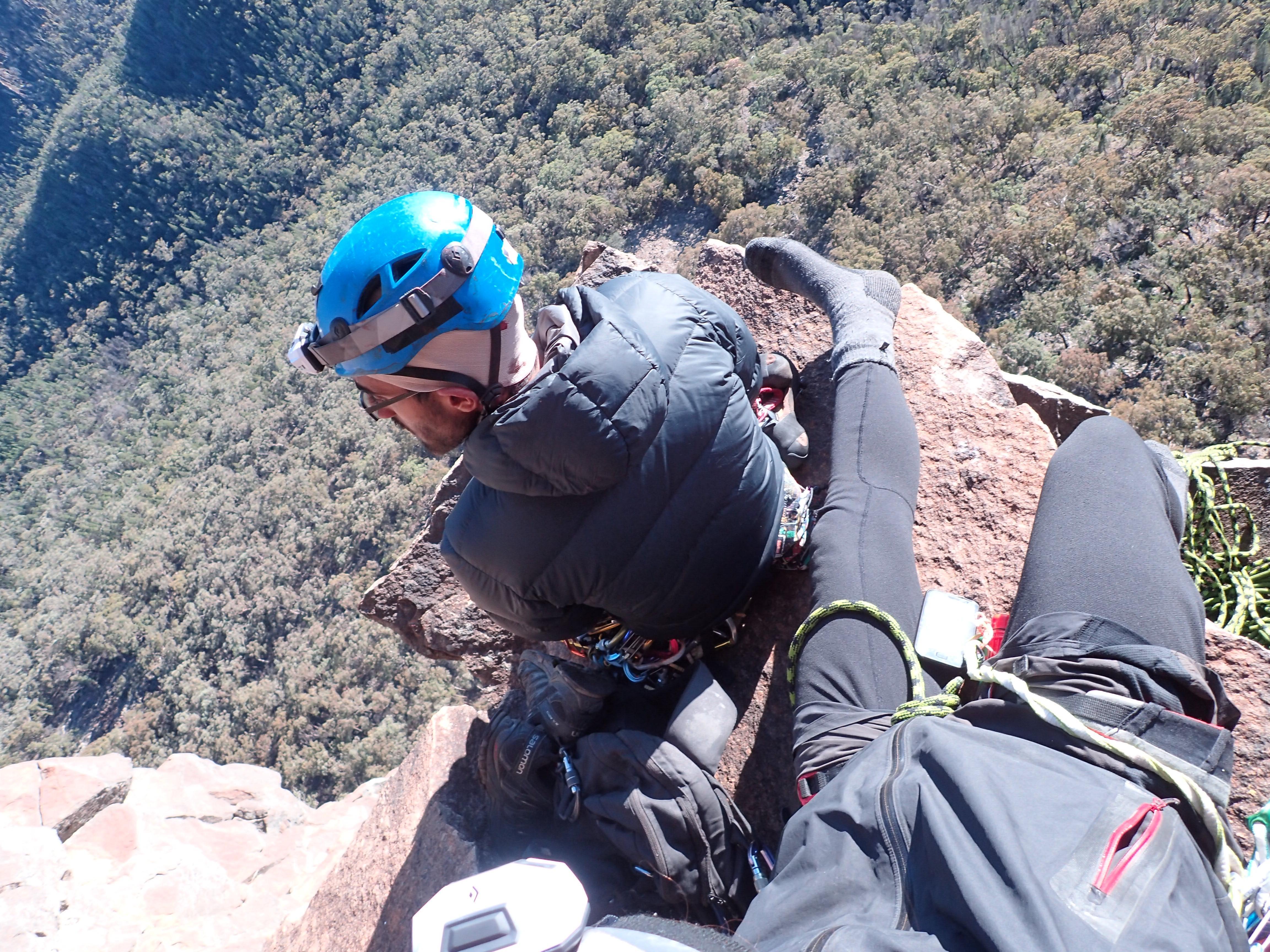
Abi:
As outdoors people, what we do is risky business to say the least. I can’t justify what we do to my non-climbing friends; all I can say is we do it because we love it. I know we will be, and already have been, criticised for prompting a difficult and dangerous rescue that took a lot of time, money and manpower. The use of the PLB was a last resort and I believe that the only way we could have avoided using it (given what we had) was to not do the climb or bail after the first pitch. We were prepared and I was lucky to only come out with bruising, scratches and a minor laceration at the back of my head. That being said, there are still some lessons we can all learn from this (see Brendan’s safety bulletin):
- Take everything, check everything and be prepared. Ask the stupid questions (‘Do I need warm clothes?’) if you have to – it might annoy your leader/partner but could save your life. Taking a PLB and Eamonn’s phone really helped us (make sure you’ve properly registered the PLB). We had a first aid kit but the space blanket in it wasn’t great – we should have checked it
- Wear a helmet. Scroll down and look at those pictures – I would not be writing this report if it weren’t for that helmet. I’m now looking at a full foam helmet – better coverage and fall protection
- Take two ropes/doubles on multipitches. Makes it easier to bail, can reduce rope drag and can save your life if one rope gets cut
- First aid. Eamonn knew what he was doing and I’d attended a course run by Laura and Kylie. He kept me awake in case I was concussed (possibility of entering a coma if you fall asleep while concussed). There’s a great app here: http://www.redcross.org.au/first-aid-app.aspx
- Route info. I’m still not convinced having a topo would have prevented this because I’ve heard and read about several people either bailing or having the worst time of their lives on this route. That, however, goes to show we could have done more research. I’m still unsure where we ended up but we think we were to the right of Bastion Buttress (facing the cliff) and closer to a 21
- Back it up. What I thought was a bomber nut blew. It had good surface contact and I set the piece. I’ve hypothesised that because of the slight curvature of the nut (DMM) it may have been sitting on a crystal. I had a 0.3 cam to back the nut up and I didn’t. Where possible, you should try and back up placements
Just wanted to acknowledge and thank a few people too. Firstly, the Westpac Helicopter Rescue crews (from Tamworth and Newcastle) and all of the Parks and VRA volunteers. Thank you for looking for us in the freezing cold and continuing to fly/abseil throughout the night. Brendan and Vicky stayed awake for most of the night and helped emergency services out (including hauling gear up) – thank you for helping and for all your moral support. Shout out to Luke and Joel who also helped take gear up. To Katie and her mum Ros, having a warm bed to sleep in was invaluable after the whole experience. Finally, thank you Eamonn for making sure I was OK. What a tradventure..
So why bloodied shirt and a Mars bar? Well it was about midnight and we were cold and hungry. Luckily, we had packed a Mars bar to hit the spot. We had been waiting for the right moment and Eamonn had suggested this was it. The thought was glorious – we were cold and quite hungry even though we’d just demolished a pack of cookies. As he was opening it, his hands were so cold that it slipped, and in slow motion slid past us and down a crack and into the abyss. At this point, I thought I’d lost my bloodied t-shirt down the crack too (I found it in the morning though) so we thought we’d name the climb after whatever we’d lost on that hellhole of a ledge.
